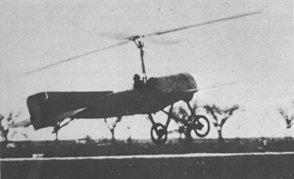A heart-warming story from April 2023 now, featuring remarkable WWII RAF veteran Bernard Gardiner who, for his 101st birthday, took a flight - and what's more after nearly 80 years, the controls! - of the world's only two-seater Hawker Hurricane.
As well as being a well-deserved and very apt gift for Mr Gardiner's milestone this was also something of a "thank you" not only for his admirable service during the war but also his role as a patron of the Hawker Typhoon Preservation Group, a charity set up in 2016 with the aim of returning an example of another of Hawker's famous Second World War aircraft - the Typhoon fighter-bomber - to airworthy status.
The Typhoon, which first flew in February 1940 and entered service in 1941, was intended to be the replacement for the Hurricane and was initially deployed as a pure fighter to counteract the German Focke-Wulf 190 which was outclassing almost everything the Allies could put up against it. Although it proved to be the equal of the Fw190, especially at low level, some early structural design flaws held it back and it was subsequently switched to the roles of low level ground attack and interception. Armed initially with six .303in machine guns, then later four 20mm cannons, the Typhoon was also able to carry up to 2,000lbs in bombs or eight wing-mounted rockets making it a formidable foe against German armour and reinforced positions. The Typhoon continued in this multi-role function for the remainder of the war, finally being retired in October 1945. Prior to that however, in September 1942, it begat the Tempest - a development of the original Typhoon design (indeed early examples were referred to as the Typhoon II) that was intended to be more of a true fighter aircraft than the Typhoon (or "Tiffie" as it was affectionately known). The Tempest would go on to become one of the most powerful piston-engined aircraft of the war - at low level the fastest single-seat propellor-driven aircraft of the time, so fast that it was easily able to deal with V1 flying bombs and even Messerschmitt's jet-powered 262.
 |
| Flight Lieutenant Walter Dring, commander of "B" Flight, No. 183 Squadron RAF, with his Typhoon Mark IB, R8884 "HF-L", in a dispersal at Gatwick, Sussex. source - IWM |
Unlike the Tempest, of which there is one airworthy survivor (which made its maiden flight only last October following seven years of restoration) and at least three around the world currently undergoing restoration to flying condition, there is currently only one extant (static) example of a Typhoon - MN235, which over the last few years has been on display at the Smithsonian National Air & Space Museum in Washington D.C., the RAF Museum at Hendon, the Canada Aviation & Space Museum in Ottawa and - at the moment - the RAF Museum London. All that will hopefully change soon, though, thanks to the hard work of Hawker Typhoon Preservation Group which is aiming to restore Typhoon MkIB RB396 to airworthy condition so that people can see this remarkable (and, in relation to the Spitfire or Hurricane, somewhat forgotten) Second World War aeroplane take to the skies again in honour of those, like Bernard Gardiner, who flew them. After a pause of a couple of years due to the pandemic work has restarted and continues apace; with luck and thanks to the HTPG we (and hopefully Mr Gardiner!) may yet see a Tiffie in the air once more.





